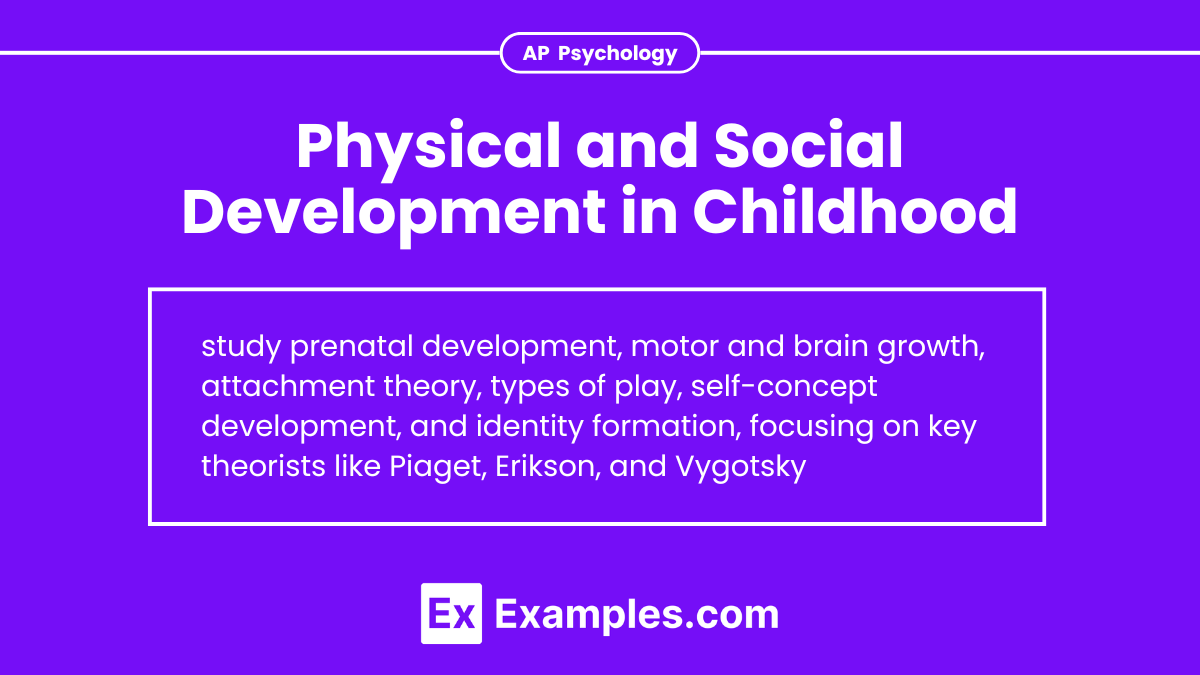Physical and social development in childhood are crucial topics in understanding human growth. Physical development encompasses changes in height, weight, motor skills, and brain maturation from infancy to adolescence. Social development involves forming relationships, developing self-concept, and learning social norms. For the AP Psychology exam, it is essential to grasp these developmental stages, including the impact of family, peers, and culture, as well as the theories of key psychologists like Piaget, Erikson, and Vygotsky.
Learning Objectives
learn the key stages and milestones of physical and social development in childhood. Understand prenatal development, motor and brain growth, and puberty’s impact. Study attachment theory, types of play, and the development of self-concept and identity. Familiarize yourself with the contributions of theorists like Piaget, Erikson, and Vygotsky. Focus on how physical growth and social interactions shape behavior and cognitive abilities, as well as the influence of family, peers, and culture.
Physical Development
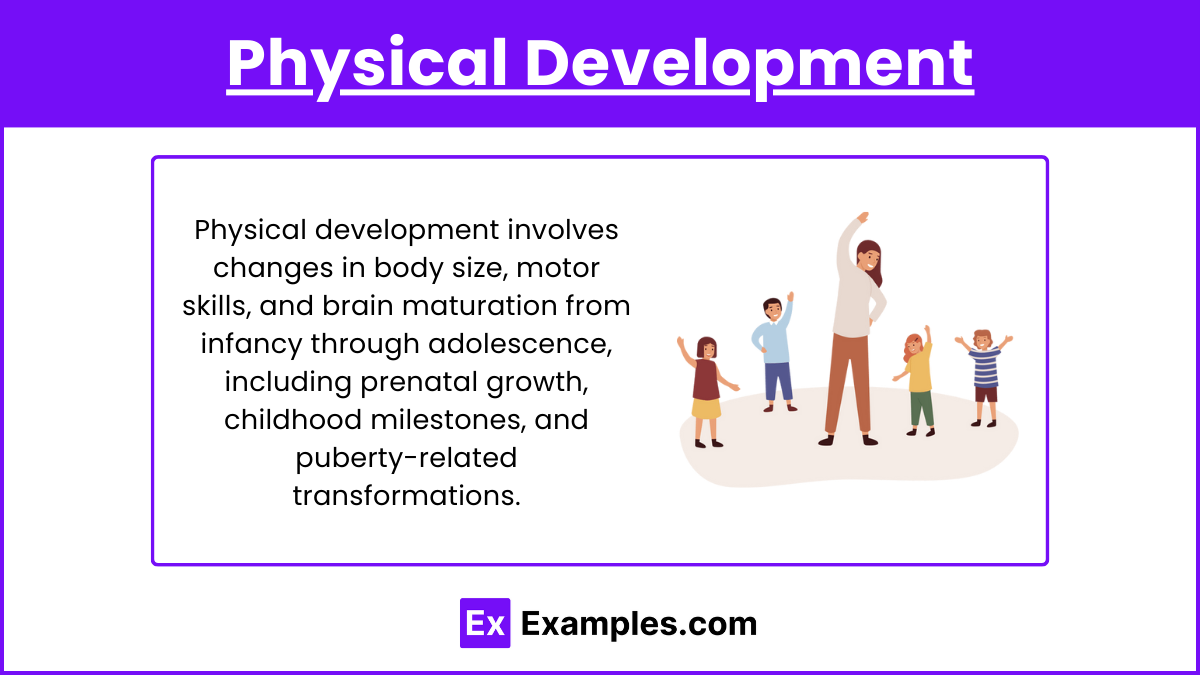
Physical development in childhood includes growth in height and weight, motor skills, and brain maturation. It begins prenatally, continues through infancy and early childhood with rapid changes, and stabilizes during middle childhood, concluding with puberty in adolescence.
Prenatal Development
- Germinal Stage (0-2 weeks):
- Begins with conception.
- Zygote forms and implants in the uterine wall.
- Embryonic Stage (2-8 weeks):
- Major organs and structures begin to form.
- Heartbeat starts, and neural tube forms.
- Fetal Stage (9 weeks-birth):
- Rapid growth and maturation of organs.
- Fetus becomes more active and responsive to external stimuli.
Stages of Development
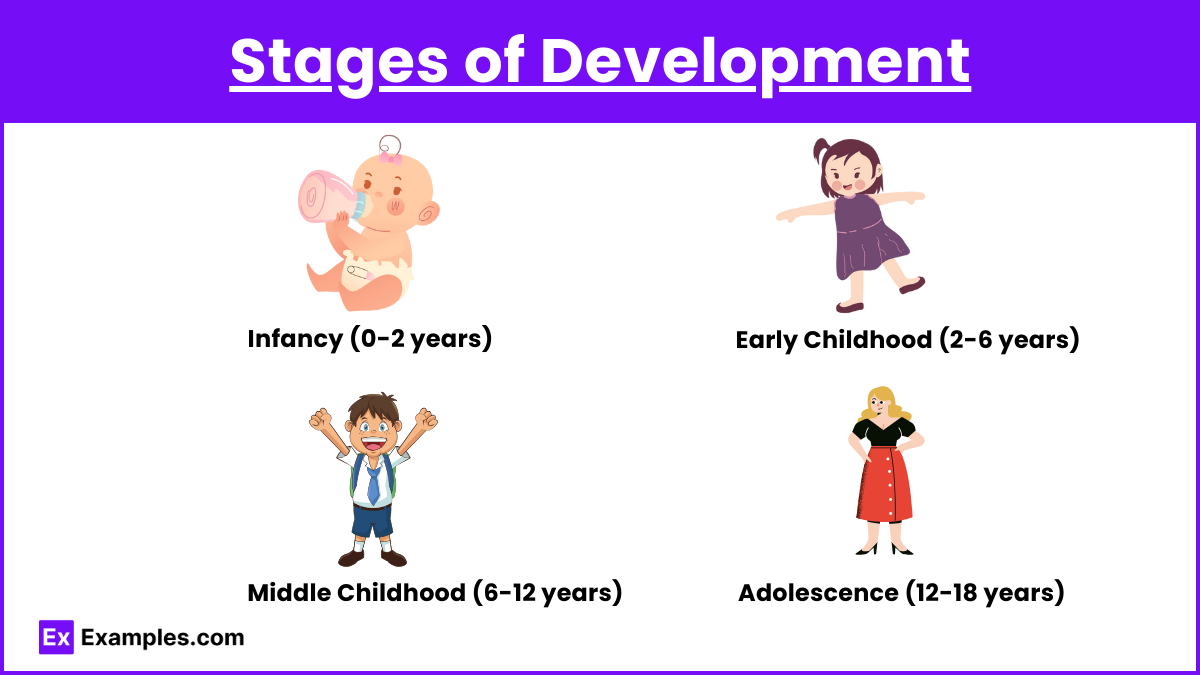
Infancy (0-2 years)
- Motor Development:
- Reflexes: Rooting, sucking, grasping.
- Milestones: Rolling over (3-5 months), sitting (6-7 months), crawling (8-10 months), walking (12-15 months).
- Sensory Development:
- Vision: Newborns can see objects 8-12 inches away, full vision develops by 12 months.
- Hearing: Fully developed at birth, infants can recognize mother’s voice.
Early Childhood (2-6 years)
- Motor Skills:
- Fine motor skills: Drawing, writing, manipulating small objects.
- Gross motor skills: Running, jumping, climbing.
- Brain Development:
- Rapid growth in neural connections, particularly in areas associated with language and cognitive skills.
- Myelination: Process of coating the axons of neurons with a fatty sheath, improving speed of neural communication.
Middle Childhood (6-12 years)
- Physical Growth:
- Steady growth in height and weight.
- Development of coordination and strength.
- Brain Development:
- Continued myelination and synaptic pruning.
- Improvement in cognitive abilities, including problem-solving and logical thinking.
Adolescence (12-18 years)
- Puberty:
- Physical changes: Growth spurts, development of primary and secondary sexual characteristics.
- Hormonal changes: Increase in sex hormones (testosterone in males, estrogen in females).
- Brain Development:
- Prefrontal cortex maturation: Improved decision-making and impulse control.
- Increased connectivity between different brain regions.
Social Development
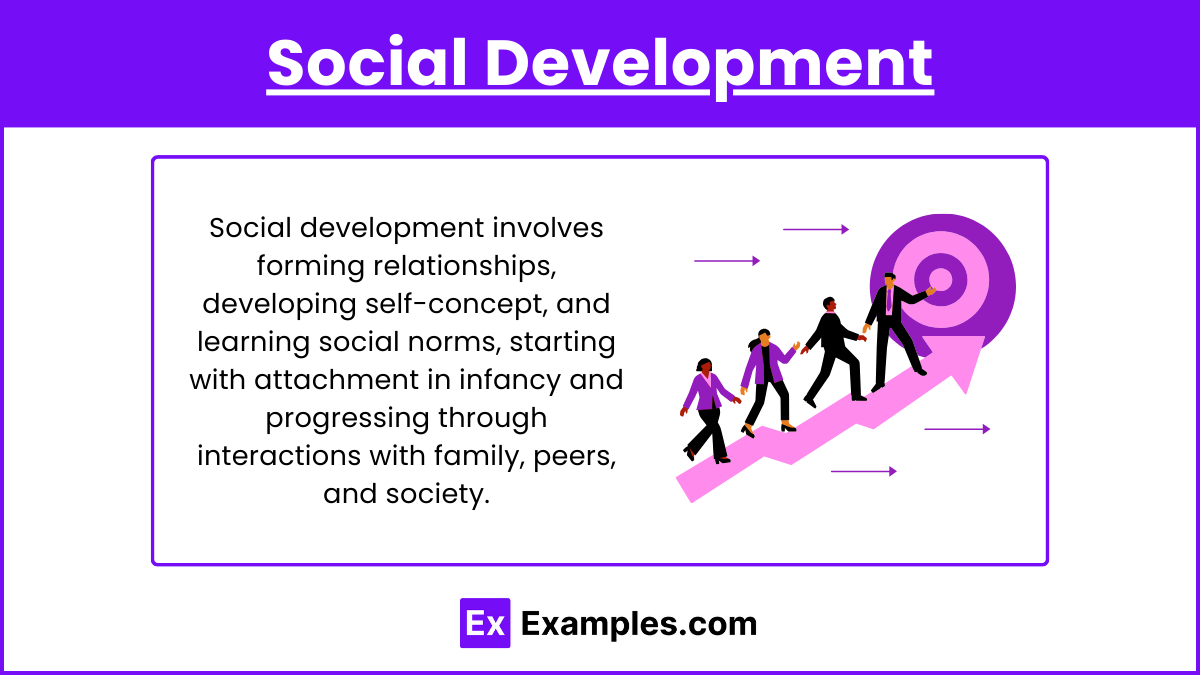
Social development in childhood involves forming relationships, developing self-concept, and learning social norms. It starts with attachment in infancy, progresses through play and peer interactions in early and middle childhood, and culminates in identity formation during adolescence.
Stages of Developement
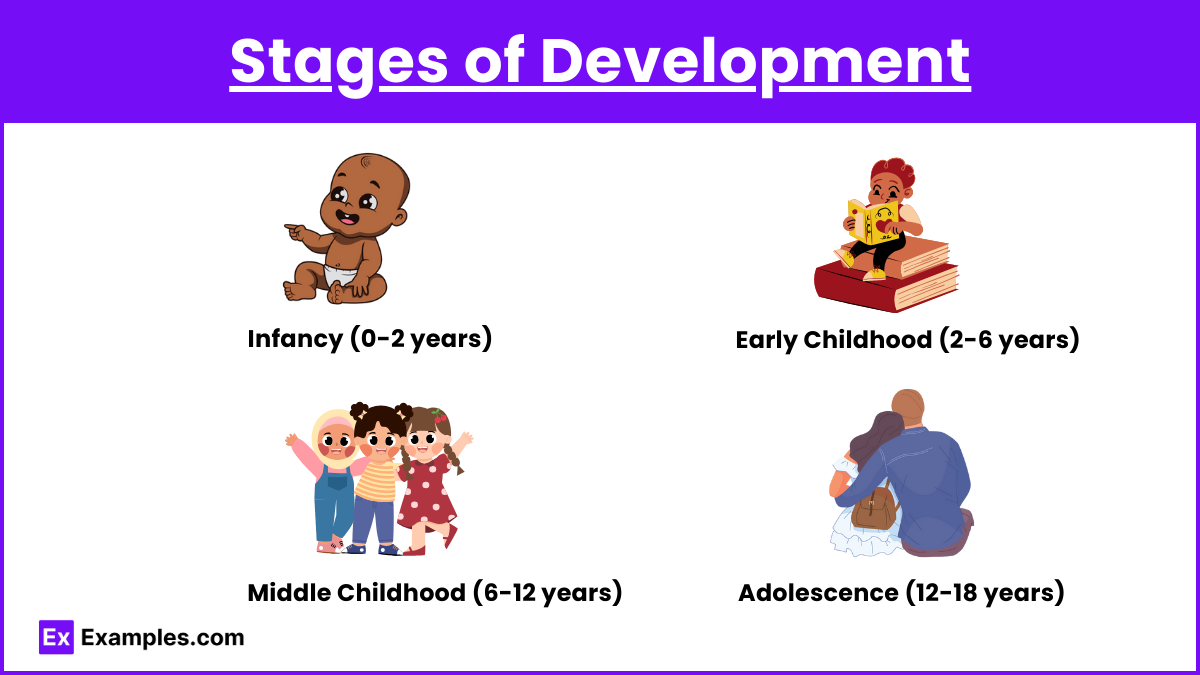
Infancy (0-2 years)
- Attachment:
- John Bowlby: Attachment theory, emphasizing the bond between caregiver and child.
- Mary Ainsworth: Strange Situation experiment, identifying attachment styles (secure, avoidant, ambivalent, disorganized).
- Social Interaction:
- Smiling, cooing, and babbling as early forms of communication.
- Development of stranger anxiety and separation anxiety.
Early Childhood (2-6 years)
- Play:
- Types of play: Solitary, parallel, associative, cooperative.
- Importance of play in developing social skills and understanding social roles.
- Language Development:
- Rapid vocabulary growth.
- Development of grammar and syntax.
- Self-Concept:
- Emergence of self-awareness and self-esteem.
- Understanding of gender roles and identity.
Middle Childhood (6-12 years)
- Peer Relationships:
- Increased importance of friendships.
- Development of social norms and group dynamics.
- Moral Development:
- Lawrence Kohlberg: Stages of moral development (pre-conventional, conventional, post-conventional).
- Understanding of rules, fairness, and justice.
- Family Influence:
- Continued influence of family on behavior and values.
- Development of independence and responsibility.
Adolescence (12-18 years)
- Identity Formation:
- Erik Erikson: Identity vs. Role Confusion stage.
- Exploration of different roles and ideologies.
- Peer Influence:
- Increased significance of peer groups.
- Conformity, peer pressure, and the formation of cliques.
- Romantic Relationships:
- Emergence of romantic interests.
- Impact of early relationships on self-esteem and identity.
- Moral and Ethical Thinking:
- Advanced moral reasoning.
- Development of personal values and ethical standards.
Key Theories and Concepts
Jean Piaget: Cognitive Development
- Sensorimotor Stage (0-2 years):
- Understanding the world through sensory experiences and motor actions.
- Object permanence: Realizing that objects continue to exist even when out of sight.
- Preoperational Stage (2-7 years):
- Symbolic thinking: Use of words and images to represent objects.
- Egocentrism: Difficulty in seeing things from another’s perspective.
- Concrete Operational Stage (7-11 years):
- Logical thinking about concrete events.
- Conservation: Understanding that quantity remains the same despite changes in shape or appearance.
- Formal Operational Stage (12 years and up):
- Abstract and hypothetical thinking.
- Problem-solving using logical reasoning.
Lev Vygotsky: Social Development Theory
- Zone of Proximal Development (ZPD):
- Difference between what a child can do alone and what they can do with help.
- Importance of social interactions and scaffolding in learning.
- Cultural Tools and Symbols:
- Role of language and culture in cognitive development.
Erik Erikson: Psychosocial Development
- Trust vs. Mistrust (0-1 year):
- Developing trust when caregivers provide reliable care and affection.
- Autonomy vs. Shame and Doubt (1-3 years):
- Developing a sense of personal control and independence.
- Initiative vs. Guilt (3-6 years):
- Asserting control and power over the environment through initiating activities.
- Industry vs. Inferiority (6-12 years):
- Developing a sense of competence and achievement through school and social interactions.
- Identity vs. Role Confusion (12-18 years):
- Developing a personal identity and sense of self.

